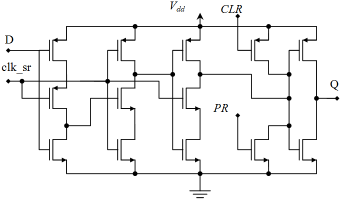minhhoa2310
Newbie level 4
Sorry, I'm newbie. I have 3 problems that can not be solve more than 1 week. I need solve as soon as possible.
Firstly, please help me draw schematic in Cadence about D Flip Flop using NMOS and PMOS or something like these.
Secondly, please help me draw schematic 8-bit register with that D-FF.
Thirdly, please help me how I can connect PLL (Phased-Locked-Loop) with a 8-bit register which contains the input value to choose frequency in PLL ( Ex: when I choose 00000001, frequency is 50Hz; 00000010, frequency is 100Hz...)
Thank you very much.
Firstly, please help me draw schematic in Cadence about D Flip Flop using NMOS and PMOS or something like these.
Secondly, please help me draw schematic 8-bit register with that D-FF.
Thirdly, please help me how I can connect PLL (Phased-Locked-Loop) with a 8-bit register which contains the input value to choose frequency in PLL ( Ex: when I choose 00000001, frequency is 50Hz; 00000010, frequency is 100Hz...)
Thank you very much.
